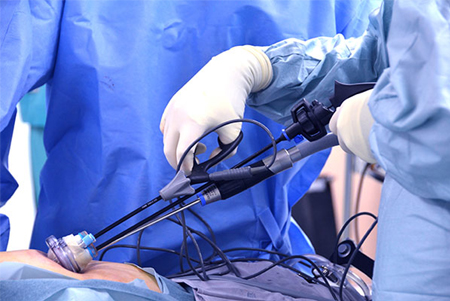LAPAROSCOPY SURGERY
» Laparoscopy is an alternative to open surgery. It uses a laparoscope to see inside your pelvic region. Open surgery usually demands a large incision. A laparoscope is a slender, lighted telescope. It enables your doctor to see inside your laparoscopic surgery body. Conditions such as endometriosis or fibroids can be determined with diagnostic laparoscopy. It can also be a form of treatment. With miniaturized tools.
Reasons for Gynecologic Laparoscopy:
Laparoscopy can be used for both diagnosis and treatment. A diagnostic procedure can sometimes turn into treatment. Some reasons for diagnostic laparoscopy are:
» Unexplained pelvic pain
» Unexplained infertility
» A history of pelvic infection

Conditions that might be diagnosed using laparoscopy include :
» Endometriosis
» Uterine fibroids
» Ovarian cysts or tumors
» Ectopic pregnancy
» Pelvic abscess, or pus
» Pelvic adhesions, or painful scar tissue
» Infertility
» Pelvic inflammatory disease
» Reproductive cancers
Laparoscopy is almost performed under general anesthesia. This means you’ll be unconscious during the procedure. However, you may go home the same day. Once you’re asleep because of the anesthesia, a small tube called a catheter is inserted to collect your urine. A tiny needle will be used to fill your abdomen with carbon dioxide gas. To keep the abdominal wall away from your organs, this gas is used. It reduces the risk of injury.
To insert the laparoscope, the surgeon will make a small cut in your navel, which transmits images to a screen. This enables your doctor with a clear view of your organs. What happens next depends on the type of method used. For diagnosis, the surgeon might take a look and then be done. If there is need of surgery, other incisions will be made. Instruments will be inserted through these holes. Then surgery is done using the laparoscope as a guide. All instruments are removed, once the procedure is over. Incisions are closed with stitches. Then you will be bandaged and sent to recovery.